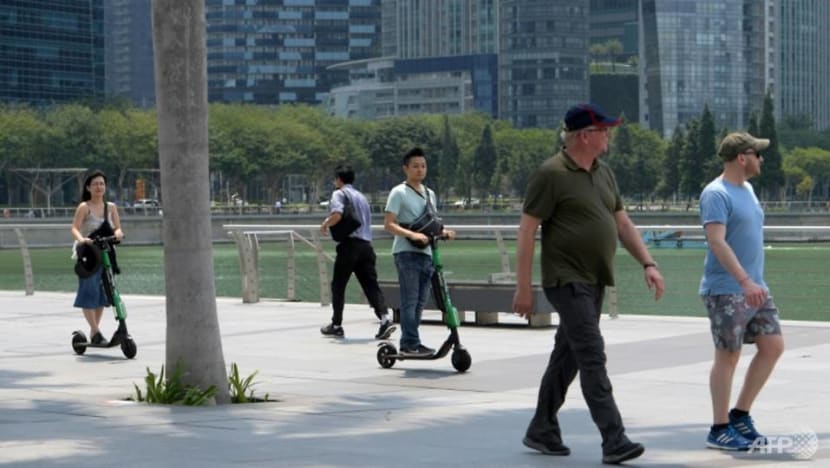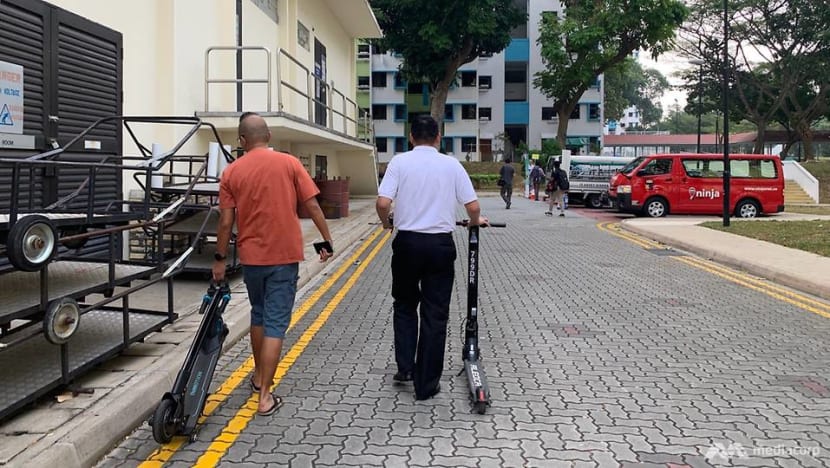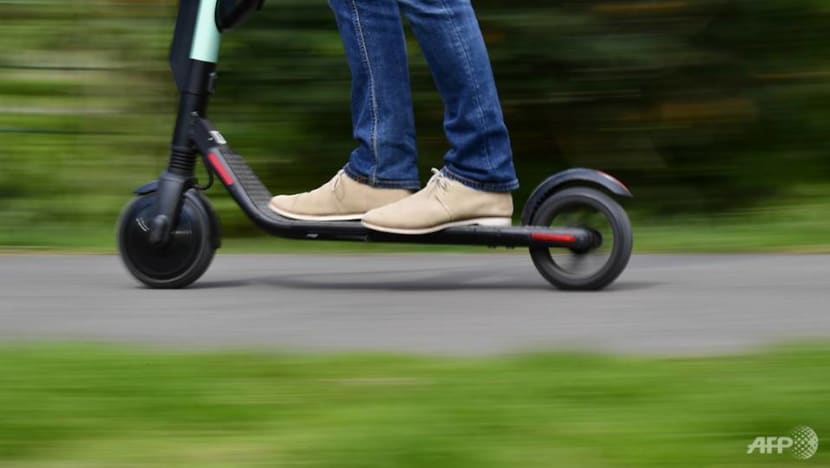commentary Commentary
Commentary: E-scooter ban on footpaths – here’s a list of those who got off scot-free
Electric scooters might be banned off footpaths but it’s letting many who should take responsibility for their externalities off the hook, says Irene Hoe.

A group of e-scooter riders scooting along the Singapore River during sunset (Photo: Jeremy Long)
SINGAPORE: Are personal mobility devices (PMDs) really that bad?
The numbers tell a terrible story. Six PMD riders dead between January 2017 and September this year reported by Tan Tock Seng Hospital alone.
‘DO SOMETHING’
It wouldn’t be Singapore if someone didn’t say “the Government should do something”. Member of Parliament (MP) Lim Biow Chuan obliged last month, among a sea of many other MPs calling for harsher punishments for errant e-scooter riders.
There was a public petition to ban them from public footpaths, with more than 69,000 signatures.
So, came new rules. The Active Mobility Act, made effective in May 2018, specified conditions PMDs and bicycles must meet like the maximum speed.
And more new rules again in 2019, mandating the registration of e-scooters, electric bikes and compliance with UL2272 certification.
READ: E-scooter ban on footpaths: 5 things you need to know
Then the rules were changed on Monday (Nov 4) when a ban on e-scooters on footpaths was announced.
Yet, all of these, in my mind, are stop-gap measures.
The casualties include e-scooter riders themselves. As far back as 2017, the warning signs were already being noticed by trauma doctors at Tan Tock Seng Hospital, who admitted close to four such casualties a month.
By September this year, that was nearly nine a month.

WHO IS AFFECTED?
The reaction thus far demonstrates one thing very clearly: That the e-scooter explosion caught our leaders and senior bureaucrats by surprise.
Perhaps, they do not ride such devices and are less likely than most people to haunt public footpaths.
Who rides e-scooters? There are said to be some 7,000 food delivery riders using e-scooters here. Most work for Grab.
Interestingly, Grab seems willing to sacrifice customer goodwill as well as rider welfare. Its reaction to the rule banning e-scooters is to pass the buck to customers, highlight the delays to delivery and essentially tell them “Wait, lah!”
READ: Statements by Grab and other food delivery companies on the e-scooter footpath ban
But these food deliverers depend on their e-scooters to make a living and complete enough deliveries.
Therein lies the seeds of the underlying problem. The approach from those in authority and from what seems to be the majority of the people, judging from the speed with which the public petition was able to gather so many signatures, has been to impose bans and restrictions. That’s too easy.
WHAT THE REAL PROBLEM IS
The transport and building infrastructure builders and regulators must swallow their share of blame too. They have clearly been blindsided by this phenomenon.
They need to come up with real solutions that incorporate the use of e-scooters at some point, and not be content to ban them.
READ: Why being hit by an e-scooter can be deadly - and a call to ban them from footpaths

A more densely populated and congested city is our reality. So is the use of new technology in mobility.
To its credit, the LTA responded promptly when I brought to its attention how a recently beautified public footpath leading from my estate to Clementi Road was too narrow to allow a cyclist or e-scooter rider to pass a pedestrian safely.
On a recent evening, I was walking home when a burly man and a young boy, both on e-scooters, came up behind me. I heard them talking.
So I quickly stepped off the path and onto the grass verge. They zipped past with nary a glance at me, nor a pause in their conversation.
Not long afterwards, on a public footpath near Lucky Plaza, I noticed an e-scooter rider coming towards me.
Ahead of him walked a grey-haired man oblivious to the danger approaching. I grabbed the old guy and shoved him into the bushes.
The e-scooter dodged the man and zoomed past us, the rider still looking at his cellphone.
When the startled old man began to berate me, an onlooker stopped him. “Uncle, this auntie just saved you,” he said.
READ: The Big Read: Calls to ban PMDs mount as accidents persist — but is it the best option?

Today, with e-scooters banned from public footpaths, Singapore, like all the places wrestling with the problem, is just at the starting gate to a solution.
We must take a good hard look at the businesses and business owners who imported this e-scourge into Singapore and have so far been largely able to dodge blame.
The importers and sellers of these machines are the source of the problem. They are the ones who have profited most from e-scooters, and they must now be made to become part of the solution.
READ: Commentary: Can we co-exist with PMDs? Yes, but we need to take a different path
The fallout from e-scooters is not limited to death and bodily harm. There have been too many fires resulting from the charging of these devices.
PERSONAL RESPONSIBILITY
Beyond that, we also have to look inwards. What about personal responsibility?
Whenever I spend time in the Netherlands, I have always been impressed by the skill, deftness and consideration with which the people move around on bicycles.
What do we have to do as a nation to develop that same wonderful consideration for other people – no matter what passport they hold – so that we look out for one another, sometimes in a very literal way?

And then, how do we hardwire that into our national psyche?
While I could not oppose the petition to ban e-scooters in Singapore, or ban them from public footpaths, I cannot support either move, simply because I realise that to thousands of people, it represents the ability to support themselves and their families. It is their lifeline.
Whatever solutions are considered, we cannot lose sight of that.
Irene Hoe is a writer, editor and coach and has been a journalist for many decades.










